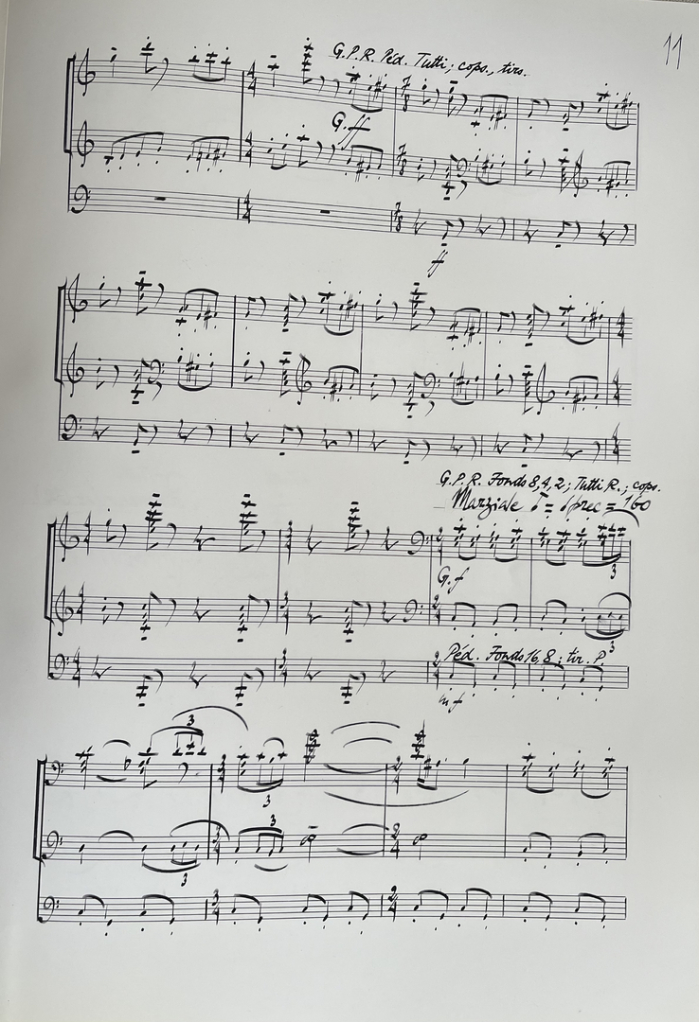
Gregoriana
Title, Duration, Place, Year, Publisher, Dedicated to, Premiere (performer(s), place, date)
GREGORIANA, 8', Bayonne-Chatou, 2003, Leduc, In memory of Theodore Marier, Founder of the Boston Archdiocesan Choir School, and his beloved wife, Alice, Leo Abbott, Cathedral of the Holy Cross, Boston,MA, USA, 22 Feb 04)
GREGORIANA est bâtie sur trois mélodies de plain-chant, en hommage au dévouement du Dr Marier, toute sa vie durant, à l'enseignement et l'interprétation du chant grégorien. Repleatur os meum, un chant traditionnel d'investiture des choristes, introduit l'oeuvre avec une méditation en arpèges ascendants sur les flûtes. Une variation contrastée sur le cornet donne un relief contemplatif au centre de ce premier volet, avant un rappel transposé du matériau initial. Suivent des variations libres sur l'Alleluia de la messe de la Pentecôte. Celles-ci sont très rythmiques et évoluent du grave vers l'aigu, de la danse des mortels à la Joie éternelle des Corps Glorieux. Un épisode sur l'hymne Cor, arca legem de la fête du Sacré-Cœur apparaît au centre de cette fresque, comme un regard vers le Bien-Aimé.
GREGORIANA is based on three Gregorian melodies as a tribute to Dr. Marier's life-long devotion to the teaching and performance of Gregorian Chant. Repleatur os meum, a chant traditionally sung at the investiture of choristers, opens the piece with a meditation in ascending arpeggios on the flutes. A contrasting variation on the cornet lends a contemplative aspect to the middle of this first section, before some of the initial material appears once again in transposition. Then intensly rhythmical variations based on the Alleluia from the Pentecost Mass follow, progressing from bass to treble - from the dance of the mortals to the Eternal Joy of the Glorified Bodies. An episode based on Cor, arca legem, a hymn from the Feast of the Sacred Heart, appears at the center of this fresco, as a glance at the Beloved.

